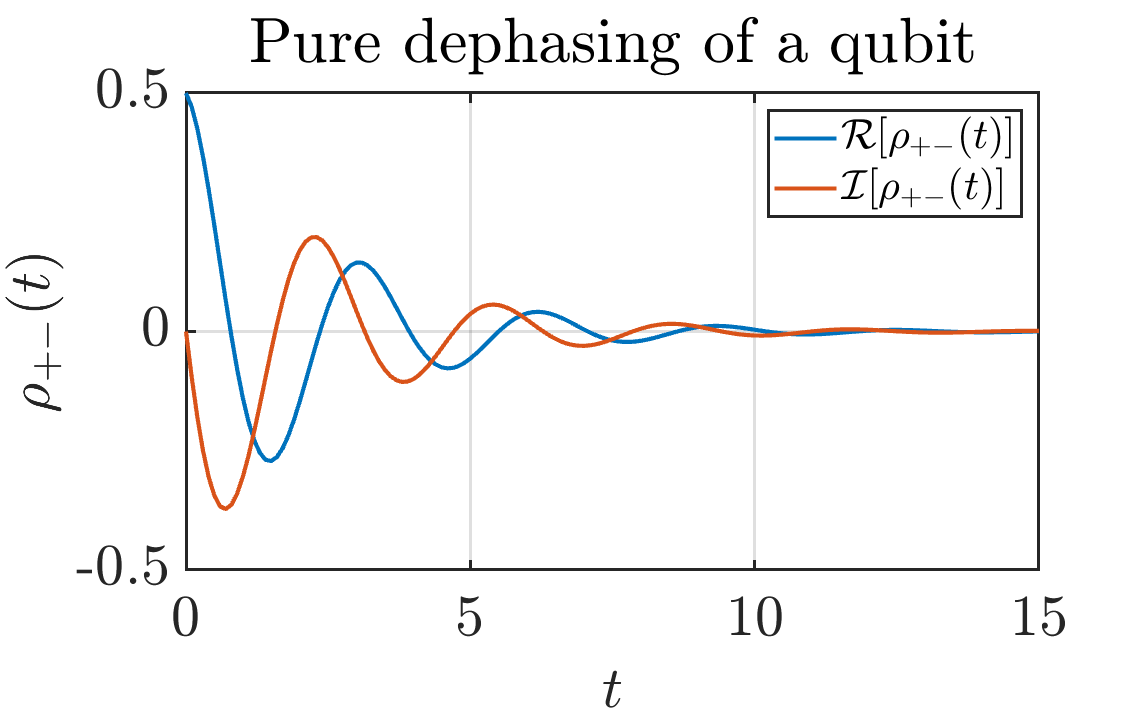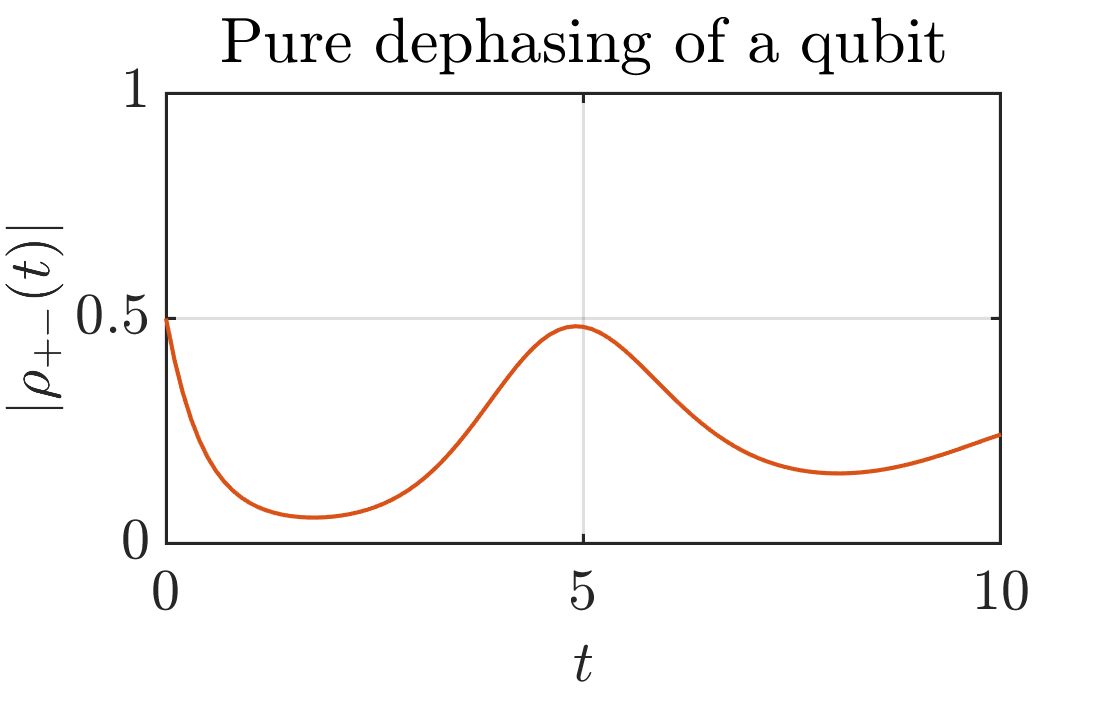This simple matlab function allows you to compute the density matrix evolution under a Lindblad Master Equation
The function requires you to specify the Hamiltonia
This function vectorizes the density matrix
The Lindblad operator that gives rise to pure dephasing dynamics is given by 
In this case a time dependent Hamiltonian and decay rate is given. The Lindblad operator is still 
